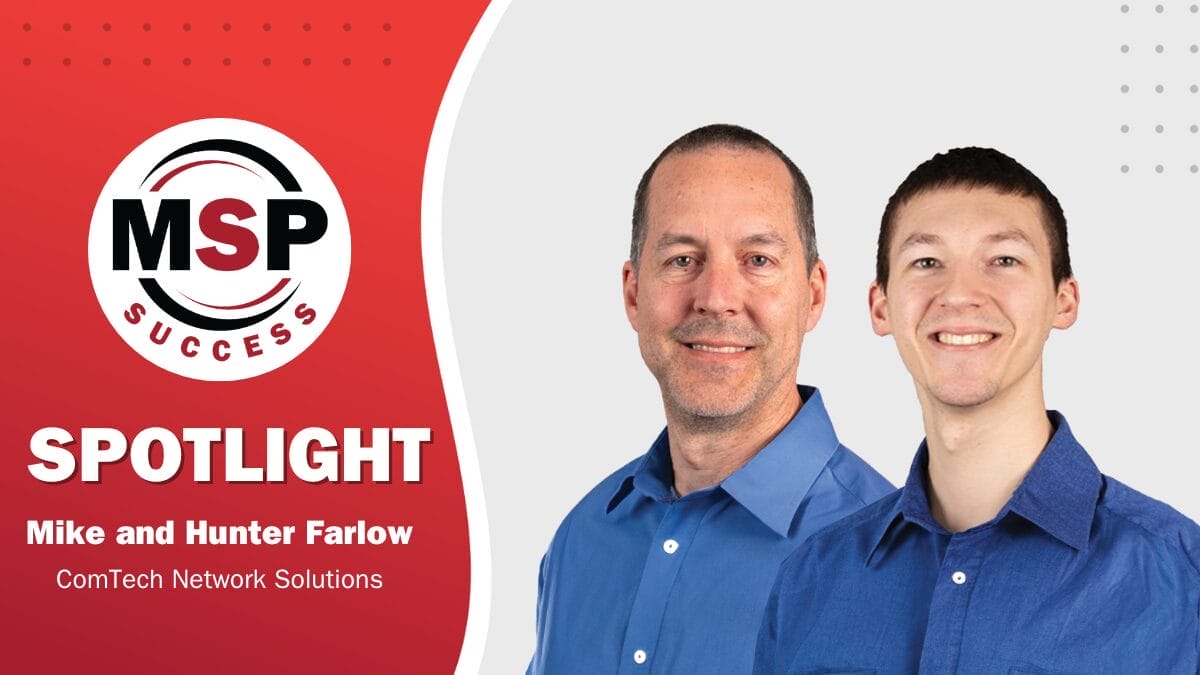If you would like to become instantly attractive to your ideal client…
To have them recognize you’re different in 30 seconds or less…
To effortlessly explain to prospective clients how you’ll help solve their IT problems and achieve their IT goals …
And ensure your marketing efforts don’t flop…
Keep reading because I’ll share one of the simplest, most powerful systems for doing exactly that. Plus, at the end, I’ll share how you can witness in person the man behind this revolutionary formula that has helped more than 3000 companies grow and quadruple revenue.
So instead of continuing to pour money down the drain like most companies, ALL your marketing will speak the language that eliminates confusion, connects with your ideal clients, and grows your company.
CEO of StoryBrand and New York Times best-selling author Donald Miller is on a mission to help companies stop wasting money on marketing by simplifying the marketing process. The author of 10 books, his #1 Wall Street Journal bestselling book Building A StoryBrand is easily among the best marketing books I’ve read. This says A LOT as having focused my career on marketing, sales, and advertising during the last 20+ years, I’ve read a heap of marketing books. Miller offers a practical, innovative, easy-to-understand, step-by-step guide to using story in your marketing to instantly attract and hold your ideal client’s attention. Based on the psychology of how human beings are wired and how we all relate to story, it’s a strategy that is simple to understand, yet incredibly powerful and something you’ll use forever.
In Building A StoryBrand, Miller begins by discussing what’s wrong with most marketing approaches and why your messages are not being heard by your desired clients. What follows is the seven elements of his StoryBrand BrandScript framework which helps you to simplify your marketing and messaging. His system, which has been used by everyone from Presidential candidates to Fortune 500 companies to small independent businesses will help you stop wasting money and create a winning story that sells instead. Miller rounds out the book by walking you through the process for building your own StoryBrand BrandScript and implementing it into all your marketing including your website, lead generation campaigns, and presentations.
Miller breaks his book into the following three sections:
Part 1: Why Most Marketing Is A Waste Of Money (And How To Avoid That Fate)
The reason most marketing is a waste of money and doesn’t work isn’t that the products and services aren’t good enough. It’s because the marketing is too complicated, and it confuses your audience. A confused mind won’t buy. Miller writes, “People don’t buy the best products; they buy the products they can understand the fastest.”
Clarifying your message and offer is the key to getting clients to listen and buy. This is especially relevant in the IT industry where many IT providers, MSPs and VARs have complicated messaging that their clients don’t understand.
There are two main mistakes companies make. First, they fail to focus on the aspects of their offer that help clients survive and thrive. Second, they make clients tax their brains too hard on trying to understand their offers.
Miller explains that the simpler your message and the more predictable the communication, the easier it is for a consumer’s brain to digest. Therefore, story is the ideal vehicle for delivering a clear message. Story makes sense to people because we’ve been hearing stories since we were young. Plus, story makes an effective communication framework because all stories have essentially the same flow, making them predictable so clients don’t have to tax their brains.
However, it’s important to filter your communication to not only make it simple and relevant but to make the client the hero of your story and use the pillars in ancient storytelling to connect with your clients.
Part 2: Build Your StoryBrand
The secret to creating a simple, clear message that is inviting to your clients is to use the seven elements in Miller’s StoryBrand 7 Framework (SB7). Miller explains SB7 along with this overview of a story which he describes in this way:
“A CHARACTER who wants something encounters a PROBLEM before they can get it. At the peak of despair, a GUIDE steps into their lives gives them a PLAN and CALLS THEM TO ACTION. That action helps them avoid FAILURE and ends in a SUCCESS.”
Nearly every book you read and every movie you watch contains these seven predictable elements. Where companies mess up and confuse their clients is when they don’t stick to this storytelling formula. The further you veer from these seven elements, the more difficult it is for prospects and clients to engage with you.
For example, Miller demonstrates by describing how Apple grew only after Steve Jobs began creating their message based on the elements of story. Prior to using the story formula, Apple released a nine-page ad in the New York Times spelling out their Lisa computer’s technical features. Nobody understood the message, and the computer bombed.
After learning about the elements of story, Jobs returned to Apple and ran a two-word campaign on billboards across America. The two words were Think Different.
By Apple spending the time to clarify the role they play in their customer’s story, they created significant growth. Notice the story is not about Apple, it’s about their customer.
Remove all the clutter, confusion, and extra complex details and focus on answering what you offer, how it will make your ideal client’s life better, and what they need to do to buy your product or service. Miller has demonstrated again and again, that by simplifying your message, your business will grow.
The seven elements to the SB7 Framework are:
1. A Character
A big premise of the book is that most companies get the story wrong. Clients don’t care about your story. They care about their own story. The secret to every wildly successful business is that they understand the client must be the hero of your story, not your brand, product or service. The first shift the SB7 Framework makes is to position your client as the hero of your story with you, your product or service, as the guide. Make this shift and you’ll be recognized as a trusted resource that will help them overcome their challenges.
2. Has a Problem
The second way companies get the story wrong is they sell solutions to external problems only when there are three levels of problems a client encounter. The three levels of problems you can help solve are external, internal, and philosophical problems.
Clients are much more motivated to resolve internal problems which is why clients are more likely to buy when you focus on more than just the external problem.
The more you discuss the problems your clients’ experience, the more you’ll deepen their interest in what you offer. For example, instead of talking about how you’ll manage their IT systems and networks, speak to how they will have peace of mind by avoiding downtime, protecting their company data from incidents and malicious attacks, and complying with regulatory requirements.
Miller explains it like this, “Clients are attracted to us for the same reason heroes are pulled into stories: they want to solve a problem that has, in big or small ways, disrupted their peaceful life.”
3. And Meets A Guide
Heroes often don’t know if they have what it takes to overcome a challenge they are facing. That’s where the guide who has authority, steps in. As mentioned earlier, positioning your company as the hero will cause clients to remain distant. In stories, including your own story, you’ll see that often someone steps into your path to help guide you through challenges. The story is not about the guide and should not be focused on the guide, it should be focused on the hero (your client) and your clienthero’s success, not your own success. When you play the role of the trusted guide that offers the hero wisdom and tools and encouragement to the hero, expressing empathy for your client’s plight, you’ll create a bond of trust that moves your client to take action and help them achieve success.
4. Who Gives Them A Plan
At this point, even when you’ve identified what your client wants, defined the three levels of problems they are encountering, and position yourself as the guide, they won’t feel comfortable buying from you unless you have a clear plan. Your clients need a clear, simple plan laid out for them that takes away any confusion they might have about how to do business with you. This gives them the confidence they need to buy.
5. And Calls Them To Action
In stories, the hero only acts after they are challenged to do so. You must create an obvious call to action that communicates a clear and direct step your client can take to overcome their challenge. This lets clients understand exactly what it is you want them to do so they can decide whether they want you to play a role in their story. Your call-to-action must also be repeated often to move clients to act.
There are different types of calls-to-action you’ll want to use throughout your copy. Direct calls-to-action calls a client to place an order. Transitional calls-to-action are described as “on-ramps” leading a client toward an eventual purchase. Direct calls-to-action are obvious. Transitional calls-to-action come in a variety of forms such as free information and free trials.
6. That Helps Them Avoid Failure
This element has to do with a goal that motivates us all, which is that “every human being is trying to avoid a tragic ending.” Miller explains that “if there is nothing at stake in a story, there is no story” and if there’s nothing at stake in whether your client buys your product or service, then they aren’t going to buy from you.
During this element, you want to identify what’s at stake in your client’s story as it relates to your company. Then lay out reminders to your clients throughout your marketing about the negative consequences if they don’t take action.
7. And Ends In A Success
Never assume your client understands how your company, product or service can change their life. You must be specific and clear about how your client’s life will change because of buying your products and services. Think about what your client’s life will look like when their external problem is solved. Offer them a vision for how they will feel and why their world will be better.
Part 3: Implementing The StoryBrand BrandScript
In the final section of the book, Miller gives instructions on how to implement the StoryBrand Framework into your marketing. You’ll want to incorporate your new StoryBrand Brandscript into all your messaging across everything to create cohesiveness. Miller starts with your website and even shows how to use it to transform your company culture. He gives a marketing roadmap, showing five powerful free (or almost free) marketing efforts that will go a long way. These include creating a one-liner, creating a lead generation magnet, creating an automated email drip campaign, collecting and telling clients’ stories of transformation, and creating a system that generates referrals.
Donald Miller created StoryBrand Framework to help business owners like you reduce your stress and grow your business so you can help more clients overcome their problems.
Use this framework to create a simple, clear message that shows your ideal client how you are different from virtually everyone else. When you do, you’ll knock out your competition.
Want Donald Miller to walk you through his system? At the 13th Annual IT Sales and Marketing Boot Camp, he’ll help you understand how story works and why it’s the most powerful tool to compel the human brain. You’ll see how the SB7 formula has been used by the world’s top brands and discover how to apply this same formula to your company’s messaging including your websites, emails, lead magnets, even your elevator pitch so that you can create a clear, compelling message that stands out and attracts your ideal target, positioning you as the perfect guide to solve your clients’ IT problems. For more information or to register to see Donald Miller at the 13th Annual IT Sales and Marketing Boot Camp, visit www.RobinsBigSeminar.com









